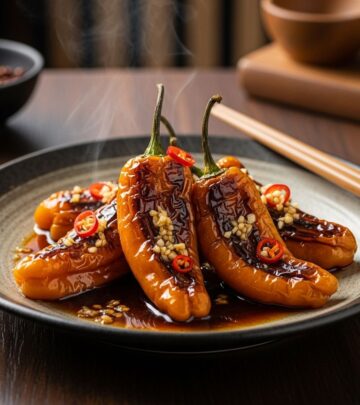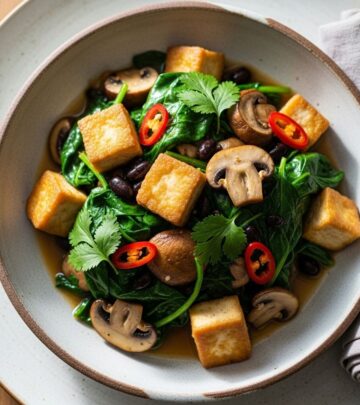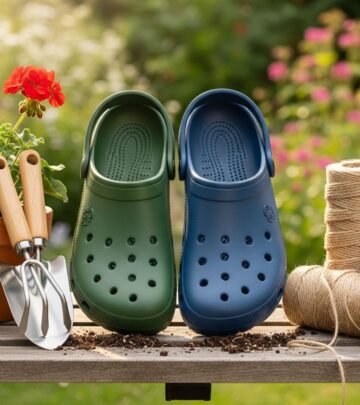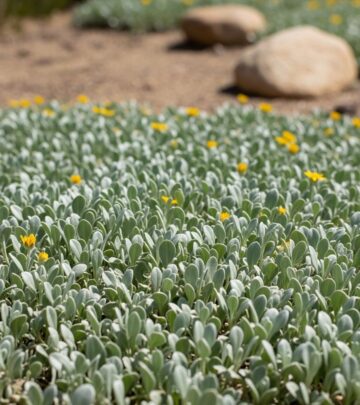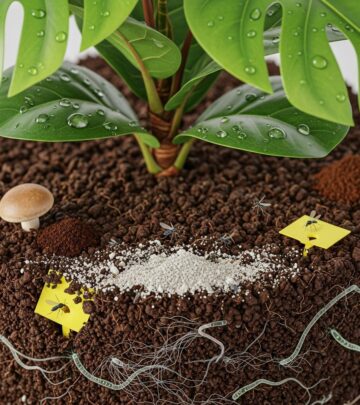Hoya Shooting Star Care: Expert Tips For Thriving Indoor Blooms
Discover the secrets to growing the mesmerizing Hoya Shooting Star with its star-shaped blooms and easy care requirements
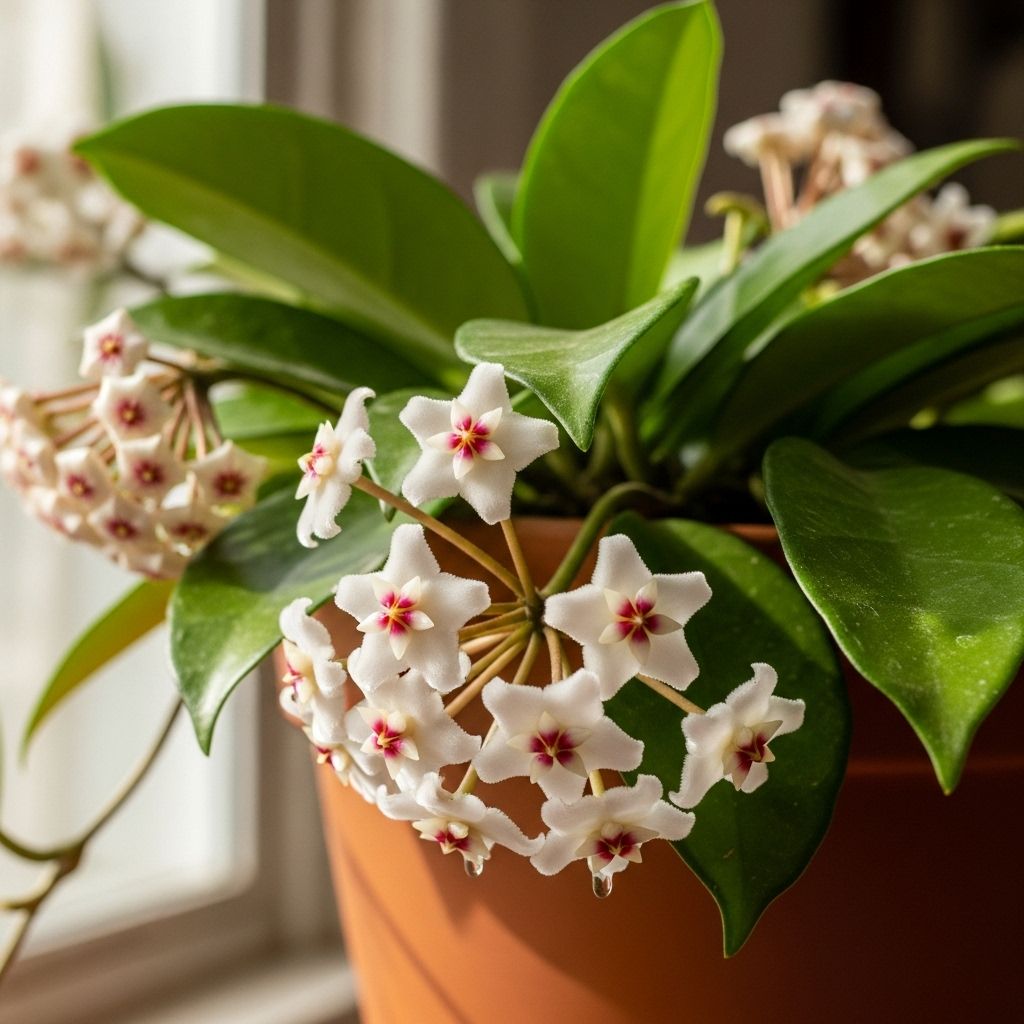
Image: HearthJunction Design Team
Introduction to the Enchanting Hoya Shooting Star
The Hoya Shooting Star (Hoya multiflora) stands out as one of nature’s most fascinating botanical wonders. With its distinctive star-shaped flowers that appear to be frozen in mid-flight across the night sky, this tropical beauty has captured the hearts of plant enthusiasts worldwide. Native to the warm, humid forests of Southeast Asia, this particular Hoya variety combines exotic appeal with surprisingly manageable care requirements, making it an excellent choice for both novice and experienced plant parents.
What sets the Hoya Shooting Star apart from other houseplants is its remarkable flowering capability. When properly cared for, it rewards its caretakers with clusters of fragrant white and golden yellow blooms that truly resemble miniature shooting stars. These captivating flowers not only add visual interest to your indoor space but also release a delicate fragrance, especially in the evening hours, transforming your home environment.
Unlike some fussier tropical plants, the Hoya Shooting Star is relatively forgiving and can adapt to typical household conditions. It features dark green glossy leaves with a slightly bushy, upright growth habit, reaching 12 to 24 inches in height and 8 to 18 inches in width when mature. This more compact nature distinguishes it from some of its vining Hoya relatives, making it suitable for smaller spaces or as a statement piece on a plant stand or shelf.
Getting to Know Your Hoya
The Hoya Shooting Star belongs to the Apocynaceae family and the Asclepiadoideae subfamily—interestingly, the same subfamily as the common milkweed (Asclepias syriaca). This relationship explains some of its distinctive characteristics, including the star-shaped flowers and the presence of a milky sap when stems are cut.
Unlike the more common Hoya carnosa, which has a climbing habit with woody stems and succulent-like leaves, the Shooting Star variety tends to grow more compactly and upright. This makes it particularly well-suited for standard pots rather than hanging baskets, though its cascading flower clusters still create a dramatic display from any position.
One of the most endearing qualities of the Hoya Shooting Star is its relatively prolific flowering nature. While some Hoyas can take years to produce their first blooms, the Shooting Star is known to flower more readily when its basic needs are met. Each flower cluster (umbel) contains numerous individual star-shaped flowers, creating a constellation-like effect that gives this plant its evocative common name.
Creating the Perfect Environment
To help your Hoya Shooting Star thrive, it’s important to recreate conditions similar to its natural habitat. These plants originate from tropical and subtropical regions where they grow as epiphytes (plants that grow on other plants) or lithophytes (plants that grow on rocks). This background influences their preferred growing conditions.
Light Requirements
The Hoya Shooting Star thrives in bright, indirect light—more than many other houseplants. Place your plant near an east or west-facing window for optimal growth and flowering. While these plants can tolerate some direct morning sunlight, they should be protected from harsh afternoon sun that might scorch their leaves. If you notice your Hoya stretching or becoming leggy, it’s likely reaching for more light and should be moved to a brighter location.
In lower light conditions, your Hoya Shooting Star will survive but may grow more slowly and produce fewer or no flowers. If natural light is limited in your space, consider supplementing with a grow light to encourage healthy growth and blooming.
Temperature Preferences
As a tropical plant, the Hoya Shooting Star appreciates warm temperatures, ideally between 60°F and 80°F (15.5°C to 26.7°C). It prefers temperatures around 70°F-80°F (21.1°C-26.7°C) during the day and slightly cooler temperatures of 60°F-65°F (15.5°C-18.3°C) at night. This day-night temperature difference can actually help stimulate flowering.
Protect your plant from cold drafts, air conditioning vents, and sudden temperature fluctuations. While Hoyas are generally adaptable, temperatures below 50°F (10°C) can damage the plant and inhibit growth.
Humidity Considerations
While the Hoya Shooting Star can adapt to average household humidity, it will truly flourish in more humid conditions reminiscent of its tropical origins. Ideal humidity levels range from 40-60%. If your home is particularly dry, especially during winter months with heating, consider these methods to increase humidity:
- Group your Hoya with other plants to create a microclimate with higher humidity
- Place your plant on a pebble tray filled with water (ensuring the pot doesn’t sit directly in the water)
- Use a humidifier near your plant collection
- Consider placing your Hoya in a naturally humid room like a bathroom with a shower, as long as there’s adequate light
Essential Care Tips
Watering Wisdom
The Hoya Shooting Star has succulent-like properties that allow it to store water in its leaves, making it relatively drought-tolerant. The golden rule for watering this plant is to let the top inch of soil dry out completely between waterings. During active growth in spring and summer, this might mean watering once every 7-10 days, while in winter, you might extend this to every 2-3 weeks.
Overwatering is the most common cause of problems with Hoyas. Signs of overwatering include yellowing leaves, soggy soil, and eventually root rot. If you’re unsure whether to water, it’s better to wait an extra day—these plants are more forgiving of underwatering than overwatering.
Interestingly, when your Hoya is in bloom, it may require slightly more frequent watering to support flower production. Pay attention to your plant’s needs during this special time, adjusting your care routine accordingly.
Soil and Potting
The right potting medium is crucial for the health of your Hoya Shooting Star. These plants require well-draining, well-aerated soil that prevents water from pooling around the roots. A suitable mix might include:
- 2 parts quality potting soil
- 1 part perlite or pumice
- 1 part orchid bark
This combination creates plenty of air pockets while still retaining some moisture. The soil should be mildly acidic, with a pH between 6.0 and 7.0 for optimal nutrient uptake.
When it comes to potting, Hoyas prefer to be slightly root-bound and don’t appreciate frequent disturbance. Choose a container that is only 1-2 inches larger than the root ball and has sufficient drainage holes. Terracotta pots are an excellent choice as they wick away excess moisture. Only repot your Hoya when absolutely necessary—perhaps every 2-3 years or when it becomes difficult to keep up with watering needs because the pot is densely packed with roots.
Fertilizing Schedule
During the active growing season (spring through early fall), feed your Hoya Shooting Star with a balanced liquid fertilizer diluted to half the recommended strength. Apply this monthly to support healthy growth and encourage flowering. Some growers prefer fertilizers specifically formulated for flowering plants or those with a slightly higher phosphorus content to promote blooming.
In the fall and winter, as growth naturally slows, reduce or eliminate fertilization to allow the plant its natural rest period. Over-fertilizing can lead to salt buildup in the soil and may result in burned leaf tips or edges, so always err on the side of under-fertilizing rather than applying too much.
Flowering Secrets
The star-shaped blooms are the crowning glory of the Hoya Shooting Star, and encouraging these flowers requires some specific care. Unlike many flowering houseplants, Hoyas produce new flowers on old flower stems, called peduncles. These woody, knobby stems might look dead after flowering has finished, but they are actually the site where future blooms will develop.
The cardinal rule of Hoya care: never remove these old flower stems! Cutting them off means removing future flowering sites and can significantly reduce your plant’s blooming potential. With proper care, your Hoya Shooting Star can produce multiple rounds of flowers from the same peduncles year after year.
Factors that encourage flowering include:
- Bright, indirect light (this is crucial for flower production)
- Allowing the plant to become slightly root-bound
- Maintaining a regular watering schedule
- Seasonal temperature variations, especially cooler nights
- Appropriate fertilization during the growing season
Be patient—while the Hoya Shooting Star is one of the more prolific flowering Hoyas, it may still take a year or more for a young plant to produce its first blooms.
Troubleshooting Common Issues
Pest Management
While generally resilient, Hoyas can sometimes attract certain pests. The most common unwelcome visitors include:
- Mealybugs: These appear as small, cottony clusters, often in leaf axils or on stems
- Spider mites: Tiny pests that cause stippling on leaves and may produce fine webbing
- Aphids: Small, soft-bodied insects that cluster on new growth
Regular inspection of your plant, especially the undersides of leaves and stem joints, can help catch infestations early. Treat minor pest problems by wiping leaves with a soft cloth dipped in insecticidal soap solution or neem oil. For more severe infestations, you may need to isolate the plant and apply horticultural oils or insecticidal soaps according to package directions, being sure to reach every part of the plant.
Leaf Problems
Yellowing leaves often indicate overwatering or poor drainage. Check the soil moisture and adjust your watering schedule accordingly. Brown, crispy leaf edges might signal underwatering, low humidity, or fertilizer burn. Dropping leaves can occur due to dramatic temperature changes, especially cold drafts.
If your Hoya stops flowering or fails to flower, ensure it’s receiving enough light, as insufficient brightness is the most common cause of poor blooming. Also check that you haven’t accidentally removed the flower peduncles during pruning.
Propagation Techniques
Expanding your Hoya collection is relatively straightforward through stem cuttings. The best time to propagate is during the active growing season (spring to early summer) when the plant is energetic and ready to produce new growth.
To propagate your Hoya Shooting Star:
- Select a healthy stem with at least 2-3 leaf nodes
- Make a clean cut just below a node using sterilized scissors or pruning shears
- Remove the bottom leaves to expose 1-2 nodes that will go into the growing medium
- Allow the cutting to dry and callus for a few hours
- Place the cutting in a small container with well-draining potting mix or in a glass of water
- Keep the cutting in bright, indirect light and maintain consistent humidity
Roots typically develop within 3-6 weeks. If rooting in water, transfer to soil once the roots are about an inch long. Be patient with your new plant—it may take a year or more before it’s mature enough to flower.
Decorative Uses
The Hoya Shooting Star’s compact growth habit and spectacular flowers make it versatile for home decoration. Its upright nature works well on tabletops, plant stands, or shelves where its dramatic flower clusters can be appreciated at eye level. The plant’s tropical appearance pairs beautifully with other houseplants in a curated indoor garden.
Consider placing your Hoya Shooting Star in a brightly lit bathroom where it will appreciate the shower-generated humidity. When grown outdoors in suitable climates (USDA zones 10-11), it can grace a porch or patio, where its flowers will attract bees, butterflies, and birds.
The plant’s moderate size means it won’t overwhelm smaller spaces, yet its distinctive flowers make it a standout specimen even in larger plant collections.
Frequently Asked Questions
Q: Is the Hoya Shooting Star toxic to pets?
A: The Hoya Shooting Star is considered mildly toxic to pets and people if a large number of leaves are ingested. While not severely poisonous, it’s best to keep the plant out of reach of curious pets and young children who might be tempted to sample the leaves.
Q: Why isn’t my Hoya Shooting Star flowering?
A: The most common reason for lack of flowering is insufficient light. Ensure your plant is getting bright, indirect light, preferably with some gentle morning sun. Also check that you haven’t removed the old flower stems, as new flowers form on these. Finally, be patient—sometimes Hoyas need to reach a certain maturity level before they begin flowering.
Q: How often should I repot my Hoya Shooting Star?
A: Hoyas prefer to be somewhat root-bound and don’t appreciate frequent disturbance. Typically, repotting every 2-3 years is sufficient. Only move to a pot one size larger than the current container, and try to schedule repotting for the beginning of the growing season (spring) to minimize stress on the plant.
Q: Can I grow Hoya Shooting Star outdoors?
A: In USDA hardiness zones 10-11, you can grow this Hoya outdoors year-round. In cooler climates, it can vacation outdoors during warm summer months but should be brought inside before temperatures drop below 50°F (10°C). Always acclimate the plant gradually when moving it between indoor and outdoor environments to prevent shock.
Conclusion
The Hoya Shooting Star represents an ideal balance of exotic beauty and manageable care requirements. With its glossy foliage and celestial blooms, it brings a touch of tropical magic to any indoor space. By understanding and meeting its basic needs—bright light, careful watering, and minimal disturbance—you’ll be rewarded with a healthy, long-lived plant that can produce its enchanting star-shaped flowers for many years to come.
Whether you’re a seasoned plant collector or just beginning your houseplant journey, the Hoya Shooting Star offers a uniquely satisfying growing experience. Its reasonable care requirements coupled with spectacular flowering displays make it a standout choice among indoor plants, promising years of botanical joy to those who welcome it into their homes.
References
- https://www.gardenista.com/posts/gardening-101-hoya-shooting-star/
- https://www.ohiotropics.com/2021/11/21/hoya-multiflora-shooting-star/
- https://www.youtube.com/watch?v=llyfSQ3nKwo
- https://cafeplanta.com/a/blog/the-ultimate-shooting-star-hoya-care-guide
- https://houseplant411.com/houseplant/hoya-shooting-star-plant-how-to-grow-care-guide/
Read full bio of Anjali Sayee

